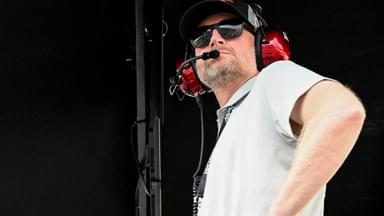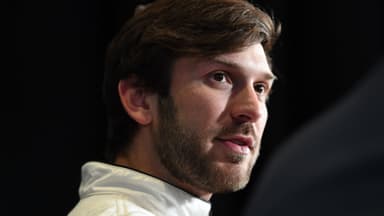Carson Hocevar, one of the most talked-about young drivers in NASCAR after Connor Zilisch, came up via the Truck Series, where fans rooted that he deserved a Cup shot. Once he got into the premier tier full-time in 2024, his aggressive style became a lightning rod.
Advertisement
Many have interpreted his style and a predisposition to take on people on the track as a sign that he isn’t that serious when it comes to refining and learning the fine art of racing. When asked about this recently, Hocevar termed it a misconception, saying people often misjudge his work ethic.
Appearing on Jeff Gluck’s 12 Questions segment, the Spire Motorsports driver admitted, “I think the consensus is, ‘He doesn’t try. He doesn’t put in any effort. He just shows up.’”
The 22-year-old then reiterated how serious he has been about racing, right from childhood. “I feel like I do [try]. I’ve been alive for 22 years, and I’ve been analyzing racing since I was 4,” added Hocevar, who recalled sitting on the kitchen counter while his mother read off pylons from the television, moving diecasts around to create his own scoring tower.
Hocevar used to watch races at Kalamazoo and Berlin, and would question decisions like, “Why didn’t you go to the top? Why didn’t you slide here?” He has carried that instinct and habit into Cup, where he dissects his own mistakes.
For him, the years of study allow him to “show up blind,” though in reality, he leans on two decades of mental preparation. The key now, insists Hocevar, is staying open-minded to how the car feels and letting the race dictate the rest.
His methods may seem unorthodox. But Hocevar insists he runs races in his head constantly, walking, driving, or daydreaming. That mental simulation, he argues, is more effective than poring over film.
He pointed to his 2022 Truck Series pole at Sonoma, where he lacked service on the plane and couldn’t watch footage. Instead, he visualized the race for two hours. The ideas clicked, and he won the pole. That success cemented visualization as his tool of choice.
“I don’t care what people think or say unless they’re in this hauler with me, but I think that translates to ‘I don’t care how I finish or how I run or putting in any effort or any work or looking at data,'” said Hocevar.
In a way, Hocevar’s process is no different than Kyle Larson improving in Cup through sprint car reps. Just two different paths, but the end target is the same.
Hocevar’s routine may not fit the mold of conventional preparation. But in his eyes, that individuality is his edge.







